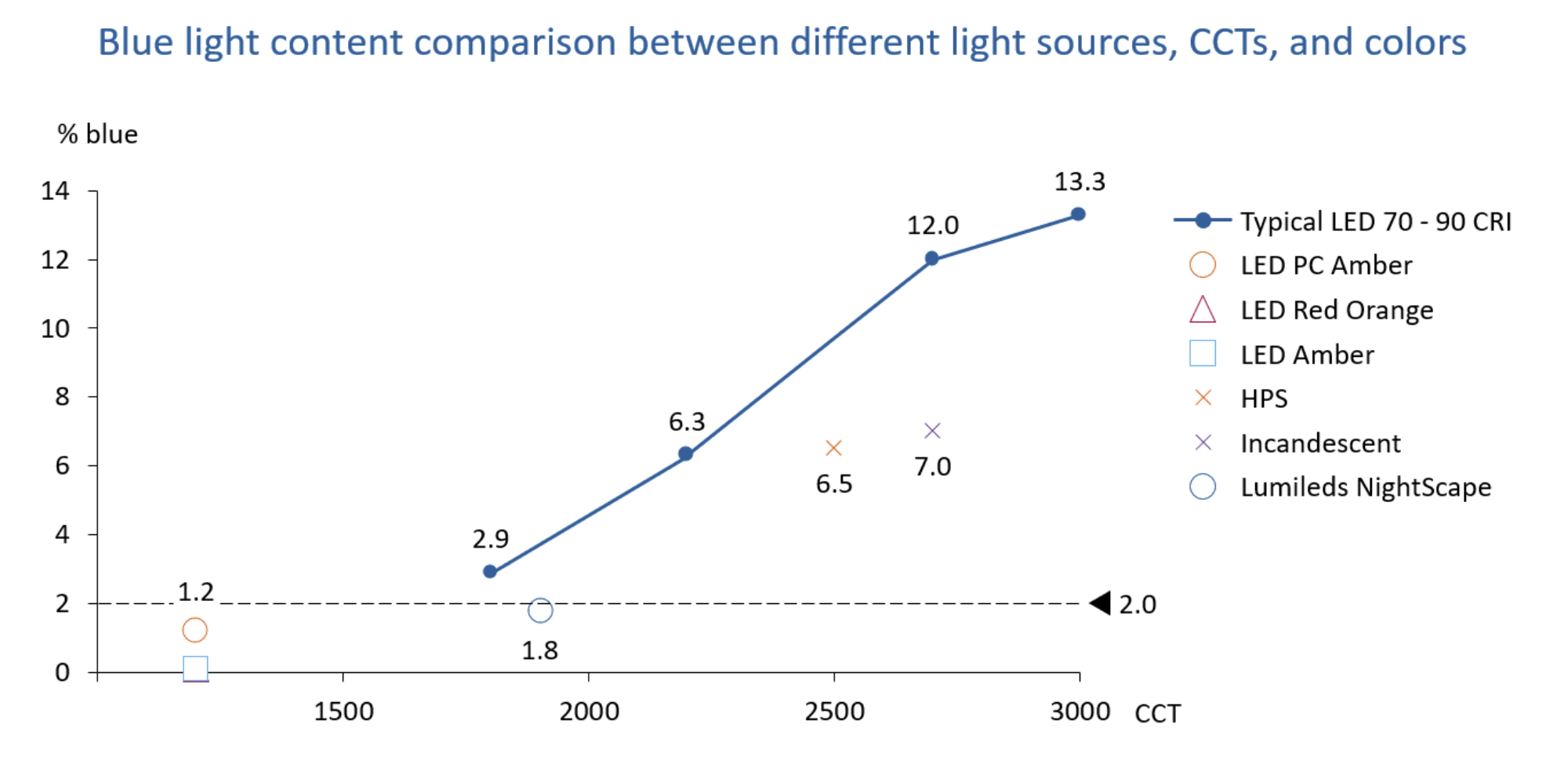Have you tried driving at night under LED streetlights?
Trying to keep your lane as your eyes adjust to the glare of lights from what seems like every which way—car head lamps, highway lamps, city LED advertisements. to your phone showing the local streetmap.
It’s awful.
Blue light is not always “convenient”
Communities are grappling with how to reduce the impact of artificial light at night.
It feels like it’s been around forever, but LEDs only came to the fore in 2011, when Philips was able to manufacture a possibly commercially viable LED bulb.
And a new generation of outdoor lights spreading across landscapes require greater scrutiny to reduce harm to wildlife.
Scientific studies have shown that high levels of blue light content adversely affect wildlife, such as birds, insects, and turtles.
LEDs disrupt the human circadian rhythm at night and increase glare, which compromises visual acuity for motorists and pedestrians.
Outdoor environments are changing rapidly and in ways that can impact wildlife species.
Maui says no to excessive blue light
To protect wildlife, Maui has passed an ordinance saying outdoor lighting must be shielded from shining upwards and contain less than 2% blue content from 400-500nm.
The ordinance went into effect on 1st July 2023.
According to the bill, all outdoor lighting fixtures, except for neon, must limit short wavelength content to no more than 2% of blue light. Mercury vapor must not be used for new outdoor lighting fixtures.
Bright, onshore lighting confused endangered turtles on Maui and they travel inland, sometimes crossing roads and getting hit by cars or attacked by dogs or others predators.
Seabird fledglings, too, get disoriented by bright lights while making maiden voyages from burrows out to sea. If the young birds tire and fall to the ground, they can get injured or eaten by rodents, feral cats or other animals.
This isn’t the first time that blue light is being contested. Environmentalists brought a lawsuit against Grand Wailea resort on Maui, a luxury beachfront hotel surrounded by a sprawling 40 acres of lush tropical landscape. It aims to protect endangered Hawaiian petrels by forcing the hotel to change its lighting. That suit is currently in the settlement phase
People are waking up to the harms of blue light
Similar efforts are underway in Europe, Asia, Africa, Australia, North America, and South America.
But what they still don’t know is that not only will this protect wildlife, it will also protect the health of their human residents.
Artificial blue light HURTS your health
Check out this graph about how much blue light are in different types of light sources.
That’s the the percent of blue content between 400nm and 500nm.
If you’re concerned about blue light dangers to your health, maybe the angle you need to take with your local government is how outdoor artificial light at night hurts animals.
Many people treat their pets better than they treat themselves.
Many companies are recognising the demand for actually-safe LEDs and are racing to make them. For an outdoor artificial lighting in a city that will be acceptable to those who still want a safe-energy energy LED, you can check this company out—https://lumileds.com/technology/led-technology/nightscape/.
Are you also affected by artificial outdoor city light blaring into your bedroom at night?
You need to move. It’s no small matter that your health hinges on your circadian rhythms. If your day-night cycles are out of whack, your hormones can never be optimal, leading to chronic metabolic issues such as diabetes, heart disease, and obesity. Research is even linking blue light to cancer.
Get black-out curtains. Try these http://bluelightdiet.com/links
Use a sleep mask. http://bluelightdetox.com/manta
Get blue light blocking glasses https://bluelightdiet.com/blog/topfivebl.
What are you doing to mitigate the blue light toxicity in your environment?


